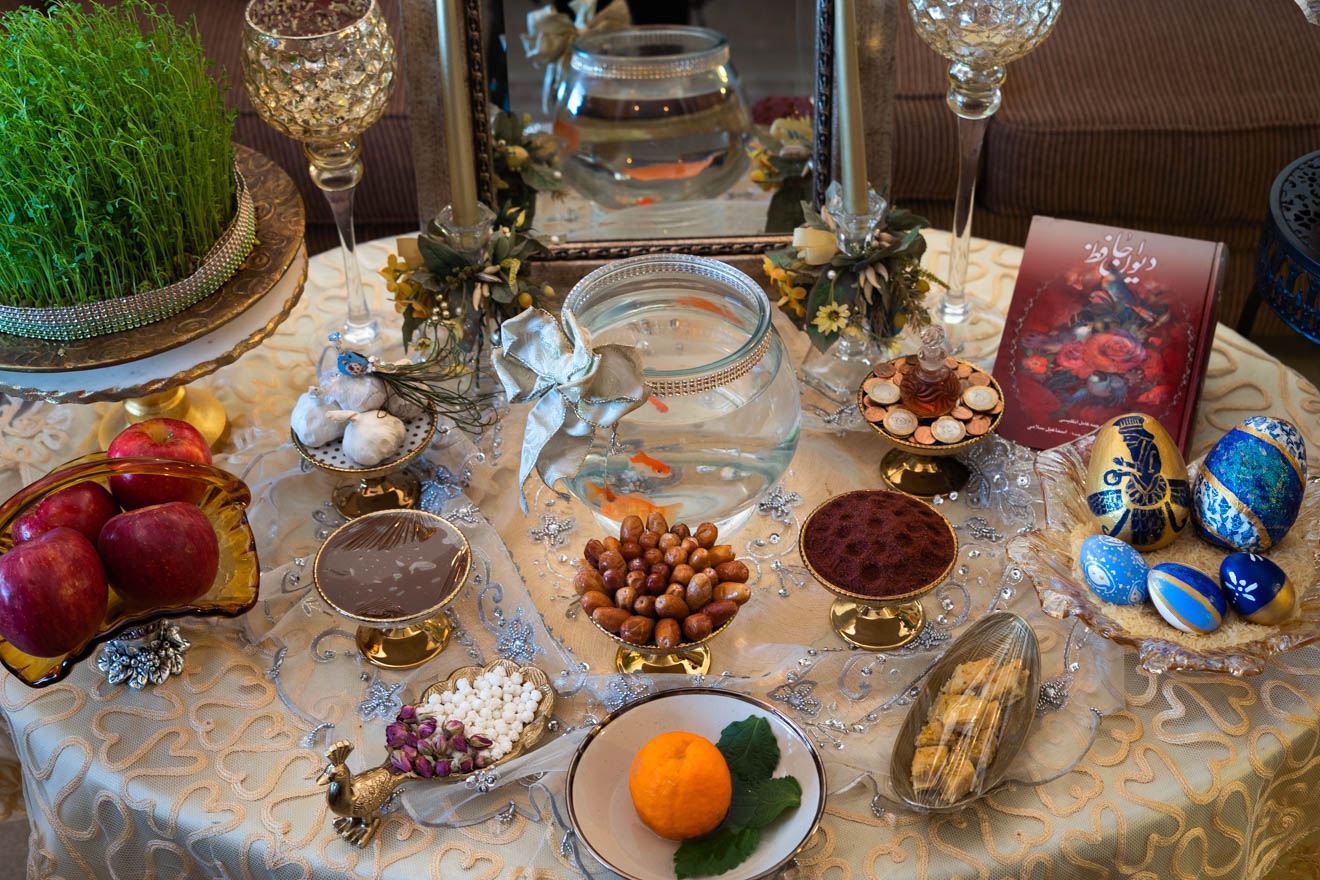
Colin and I have been lucky enough to meet and befriend people of all different cultures. Coming from a Japanese and Vietnamese family, we both know a decent amount about Asian culture. However, we’re always looking to immerse ourselves in different cultures and learn customs and traditions that have been around for generations. This is one of the reasons why we enjoy traveling!
In my Master’s program, I met one of my good friends Shaghayegh (Sherry) who really bridged the gap between Asian and Persian cultures. She is purely of Iranian descent, but has an impressive knowledge of Asian culture. In fact, she speaks Japanese more fluently than Colin does! (And she even does so in the anime baby voice that makes the hairs on my arms stand up.) I’ve had a few Persian friends, but never really learned about the culture and traditions. When Sherry invited me over to her house for Norooz, I was like “helllll yeahhh.”
Norooz (meaning a new day) is the Persian/Iranian New Year celebrated on the first day of spring or vernal equinox and marks the first day of the month (Farvardin) of the Iranian calendar. Norooz has been celebrated for over 3,000 years in Iran, Western Asia, Central Asia, the Caucasus, the Black Sea Basin and the Balkans.
In Iran, it is customary to begin spring cleaning and preparations for setting up a decorative table called Haft Sin two to three weeks before Norooz. The extent of the decorations can vary, but the same basic essentials are typically used. Haft means seven and Sin is the Persian (Farsi) alphabet for the letter S, together meaning seven items that start with the letter S. Haft sin as a whole represents humans progression from the material world to the spiritual world through constant renewal and rebirth which is represented by Norooz or the first day of spring. These seven items include:
- Sabzeh: wheat, barley or lentil sprouts growing in a dish, symbolizing rebirth
- Samanu: a sweet pudding made from wheat germ, symbolizing affluence
- Senjed: the dried fruit of the oleaster tree, symbolizing love
- Seer: garlic, symbolizing medicine
- Seeb: apple, symbolizing beauty and health, also heavenly fruit
- Somaq: sumac, a type of spice from the flowering plants in the genus Rhus, symbolizing the color of sunrise
- Serekh: vinegar, symbolizing age and patience
If one of the Sins is missing it can be replaced with:
- Sonbol: hyacinth flower, which grows in spring
- Sekkeh: coins, symbolizing prosperity and wealth
In addition to Sin there are also non-Sin items including:
- Traditional Iranian sweets such as baklava
- Dried nuts and fruits (ajeel)
- Lit candles (enlighten and happiness)
- A mirror (self reflection and introspection)
- Decorated eggs (one for each member of the family, also representing fertility)
- A bowl of water with goldfish (sign of Pisces which the sun is leaving)
- A crystal bowl of water with an orange in it (the earth floating in space)
- A book representing wisdom such as Zoroastrian’s Holy Book (the Avesta), Muslim’s Quran or Iranian poetry books (Shahnameh or Divine Hafez)



In Iran, Norooz is celebrated for the first 13 days of the first month of the year (Farvardin). On the first day, everyone in the family traditionally wears new clothes and gathers around the Haft Sin. Once the New Year begins, family members hug each other and wish each other a happy new year! The head of the family (typically the father) passes out Eidi; money hidden in the book of wisdom. Another custom of the first day is to eat sabzi mahi polo, a dish made of herbed rice and Caspian white fish. Throughout the 13 days of celebration, it is customary to visit relatives and friends, starting with the elders of the family. The number 13 is a bad luck number in Iranian Culture. Therefore, when the 13th day of Norooz arrives, “sizdah be dar” is celebrated and every family will go out in nature or have a picnic outdoors. Young girls will often tie a knot with the Sabzeh, wishing for a good partner. The Sabzeh is thrown in running water to protect the wishes from evil and bad luck. Jokes and pranks are played on sizdah be dar, similar to April Fool’s Day!
Learning about Persian culture was extremely fascinating and an honor to be part of, not to mention the incredible food! I was awestruck by the amount of detail and symbolism associated with each particular decoration. There were also a few similarities that paralleled Asian culture such as the Eidi and Li Xi (lucky money) given during Tet or Chinese New Year. We owe a big thanks to Sherry for teaching us about Norooz and letting us share everything we learned about her culture.

I hope that we can continue learning about other cultures through friends and traveling abroad. I find that even though various cultures seem drastically different at face value, they share many of the same core beliefs, such as the importance of family and respect. Let us know a little about your culture and your favorite traditions!
